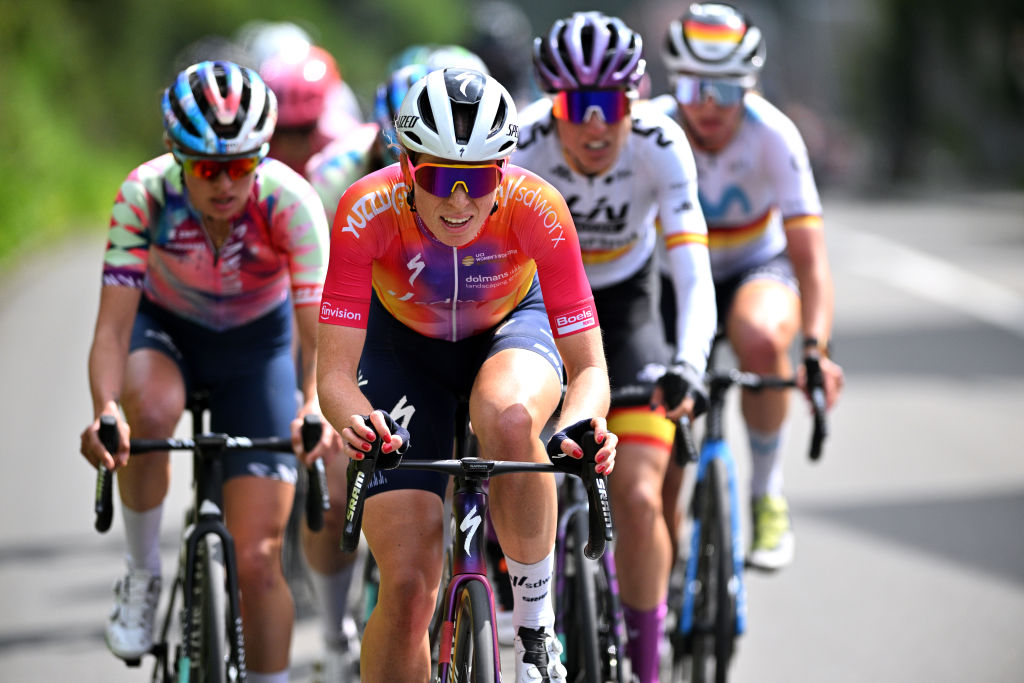Just seven kilometres from the finish of Flèche Wallonne, eventual winner Demi Vollering found herself in a rare moment of being isolated from her dominant SD Worx teammates, yet her rivals did not (or could not) attack. Despite what has traditionally been an exciting final due to the unique and decisive finish atop the Mur de Huy, the daunting ascent tends to deter late-race action.
Right after solo attacker Amanda Spratt had been caught, and in those closing seven kilometres, Vollering forced a split in the peloton on the Côte de Cherave, and only ten other riders could follow her move.
However, Vollering was without support in this selection, making for an unusual situation in a spring campaign where SD Worx normally has several cards to play. But Marlen Reusser, Niamh Fisher-Black and Mischa Bredewold had exhausted themselves in the earlier chase to catch Spratt, so they couldn’t follow their teammate’s acceleration.
Silvia Persico (UAE Team ADQ), Ashleigh Moolman-Pasio (AG Insurance-Soudal Quick Step), and Veronica Ewers (EF Education-TIBCO-SVB) also were on their own, but three teams had two riders each in the move: Canyon-SRAM with Kasia Niewiadoma and Élise Chabbey, Movistar Team with Liane Lippert and World Champion Annemiek van Vleuten, and Trek-Segafredo with Gaia Realini and Elisa Longo Borghini.
In this situation, conventional wisdom says that teams with superior numbers should attack the group – something that worked well for Team DSM in the Classic Brugge-De Panne where Pfeiffer Georgi countered just when the move by Megan Jastrab had been brought back.
But the Flèche Wallonne differs from most other Classics as it ends on a truly daunting climb. The finish line is atop the Mur de Huy, with its slopes of up to 19%, towering over Huy. For decades, attacking ahead of the Mur has been futile; the last time an earlier attack succeeded was in the men’s edition of 2003.
In addition to this reputation that almost turns the futility of late attacks (or any attacks) into a self-fulfilling prophecy, the run-in to the finishing climb just doesn’t lend itself to attacks. After a fast descent from the Côte de Cherave, less than three kilometres remain before the Mur begins, and most of these are on a wide road along the Meuse river into which a group can easily carry its speed from the descent.
Finally, several of the riders in the front group with Vollering had already been on the attack earlier in the race: Van Vleuten, Niewiadoma,…
Click Here to Read the Full Original Article at CyclingNews RSS Feed…

